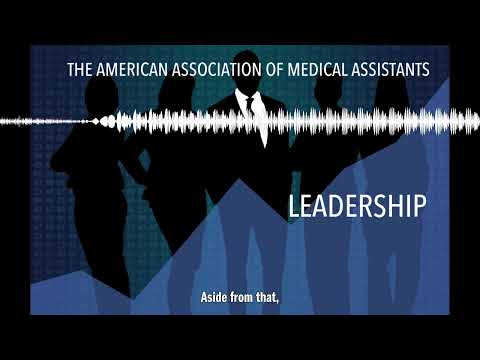10 Facts Every Medical Assistant Should Know
Contents [show]
From vital signs to medical histories, Medical assistants must know a lot of information. Check out these 10 facts every medical assistant should know!
Checkout this video:
httpv://youtu.be/https://www.youtube.com/shorts/wdjLTf49P6w
What is a medical assistant?
A medical assistant is a person who supports the work of doctors and other health professionals. They work in outpatient clinics, hospitals, and doctor’s offices.
The duties of a medical assistant vary depending on their specific job role, but they generally include taking patient histories, measuring vital signs, scheduling appointments, and preparing patients for exams. They also perform basic laboratory tests and give patients injections when needed.
Medical assistants must have a high school diploma or equivalent. Some programs also require certification, although it is not always necessary.
Here are 10 facts every medical assistant should know:
1. Medical assistants are in high demand. The Bureau of Labor Statistics projects that employment of medical assistants will grow 23 percent from 2016 to 2026—much faster than the average for all occupations.
2. A career as a medical assistant can be very rewarding. Medical assistants often report high satisfaction with their jobs—likely due to the opportunity to help others and the variety of tasks they perform on a daily basis.
3. Medical assistants can make a good salary. The median annual wage for medical assistants was $32,480 in 2016, although earnings can vary depending on experience, education, and location.
4. Most medical assistants work in outpatient care centers or doctor’s offices.. However, they can also be found working in hospitals, nursing homes or other healthcare facilities.. No matter where they work, though, they typically have similar duties..
5\. Medical assistants need strong communication skills.. They must be able to interact with patients in a professional and friendly manner while also relaying information effectively to doctors and other members of the healthcare team..
6\. Medical assisting is a challenging job that requires both physical and mental stamina.. Medical assistants must be able to handle stressful situations and long hours on their feet..
7\. Due to the demands of the job, most medical assistants work full time.. however, some may work evenings or weekends to accommodate the schedules of their patients..
8\. Although many medical assistants have on-the-job training, completing an accredited educational program can give you a leg up in the job market and prepare you for success in your career..
9\. There are several professional organizations for medical assistants which offer resources such as continuing education opportunities, networking events,, and job postings.. Joining one of these organizations is a great way to get connected with others in your field and stay up-to-date on industry news..
10\. If you’re looking for an exciting career in healthcare with plenty of opportunity for growth, consider becoming a medical assistant!
What are the duties of a medical assistant?
Medical assistants are vital members of the healthcare team. They perform a variety of duties to support doctors and other medical professionals. Here are 10 facts every medical assistant should know:
1. Medical assistants are responsible for a variety of clinical and administrative tasks.
2. They may take vital signs, collect patient histories, schedule appointments, and perform basic laboratory tests.
3. Medical assistants must be able to multitask and prioritize their workload effectively.
4. They must be detail-oriented and have strong communication skills.
5. Many medical assistants have experience in customer service or office administration.
6. Most medical assistants work in outpatient settings, such as medical offices or clinics.
7. Some medical assistants may specialize in a particular area, such as pediatrics or geriatrics.
8. Medical assistants must be comfortable working with electronic health records (EHRs).
9. They must comply with all state and federal regulations related to their role
What are the educational requirements for a medical assistant?
There are a few different educational paths you can take to become a medical assistant. You can either earn a certificate from an accredited program, complete a formal training program, or earn an associate’s degree.
Most medical assistants have at least a certificate, and many have earned an associate’s degree. The advantage of completing a formal training program or earning an associate’s degree is that you will have more job opportunities and may be able to earn a higher salary.
If you decide to earn a certificate, make sure that the program is accredited by either the Commission on Accreditation of Allied Health Education Programs (CAAHEP) or the Accrediting Bureau of Health Education Schools (ABHES).
What are the job outlook and salary prospects for a medical assistant?
Job satisfaction for medical assistants is high, with many in the field feeling a sense of career stability and job security. Most medical assistants work full time, and some work evenings or weekends. Salary prospects are also good, with medical assistants earning a median wage of $33,610 per year in 2017, according to the U.S. Bureau of Labor Statistics (BLS). And the job outlook for medical assistants is bright, with the BLS projecting 29% job growth for the field between 2016 and 2026 – much faster than the average for all occupations.
What are the skills that a medical assistant needs?
Medical assistants are healthcare professionals who perform a variety of administrative and clinical tasks to support the work of doctors and other medical staff. They typically work in doctor’s offices, clinics, and hospitals.
Though the duties of medical assistants can vary depending on the state they work in and the type of facility they work in, there are certain core duties that all medical assistants should be able to perform. These skills are essential for anyone who wants to pursue a career in this field.
1. Medical assistants should have a strong knowledge of Medical Terminology
2. They should be able to take vital signs, such as blood pressure and temperature.
3. Medical assistants should be able to measure patients’ height and weight.
4. They should be able to document patients’ medical history and current symptoms accurately.
5. Medical assistants should be skilled at performing basic laboratory tests, such as urine dipstick tests and pregnancy tests.
6. They should be able to prepare patients for examination and assist the doctor during the exam itself.
7. Medical assistants should be able to give injections and vaccinations properly.
8. They should know how to properly apply bandages, dressings, and casts.
9. Medical assistants should have a basic understanding of pharmacology so that they can answer patients’ questions about medication safety and side effects accurately.
10
What are the challenges that a medical assistant faces?
Most roasters have specialized names for their favored roasts and there is very little industry standardization. This can cause some confusion when you’re buying, but in general, roasts fall into one of four color categories — light, medium, medium-dark and dark.
Many consumers assume that the strong, rich flavor of darker roasts indicates a higher level of caffeine, but the truth is that light roasts actually have a slightly higher concentration. The perfect roast is a personal choice that is sometimes influenced by national preference or geographic location. Within the four color categories, you are likely to find common roasts as listed below. It’s a good idea to ask before you buy. There can be a world of difference between roasts.
Light roasts
Light brown in color, this roast is generally preferred for milder coffee varieties. There will be no oil on the surface of these beans because they are not roasted long enough for the oils to break through to the surface.
-Light City
-Half City
-Cinnamon
Medium roasts
This roast is medium brown in color with a stronger flavor and a non-oily surface. It’s often referred to as the American roast because it is generally preferred in the United States
-City
-American
-Breakfast
Medium dark roasts
Rich, dark color, this roast has some oil on the surface and with a slight bittersweet aftertaste.
-Full City
What are the benefits of being a medical assistant?
There are many benefits to being a medical assistant. Here are 10 facts that every medical assistant should know:
1. Medical assistants are in high demand. The Bureau of Labor Statistics projects that medical assistant employment will grow 19% from 2016 to 2026, much faster than the average for all occupations.
2. Medical assistants can earn a good wage. The median annual wage for medical assistants was $31,540 in May 2016, and the top 10% earn more than $45,770.
3. Medical assistants have several career options. In addition to working in doctors’ offices and clinics, they can also find positions in hospitals, nursing homes, and other healthcare facilities.
4. Medical assistants can choose from a variety of work schedules. Full-time positions are common, but many medical assistants work part time or have flexible schedules that allow them to balance work and life commitments.
5. Medical assistants have the opportunity to advance their careers. With experience and additional training, medical assistants can become certified and take on more responsibility – such as managing a medical office or supervising other medical assistants.
6. Medical assistsants receive on-the-job training. Most medical assistants learn through on-the-job training, though some may complete formal apprenticeships or postsecondary education programs before entering the workforce.
7. Employers value teamwork and customer service skills in medical assistants. In addition to having strong technical skills, employers also value interpersonal skills such as the ability to work well with others and provide excellent customer service.
8.. Medical assisting is a satisfying career choice.. A career as a medical assistant can be both personally and professionally rewarding. Medical assistants often report feeling a sense of satisfaction from knowing they make a difference in the lives of their patients by providing quality care and customer service.. Many also appreciate the variety of tasks they perform on a daily basis as well as the opportunity to work closely with other members of the healthcare team.. source: https://www
What are the drawbacks of being a medical assistant?
Like any job, being a medical assistant has its pros and cons. Here are some things to keep in mind if you’re considering a career in medical assisting:
1. The job can be demanding, both physically and emotionally. You’ll be on your feet a lot, and you’ll be dealing with sick and injured people on a daily basis.
2. The hours can be long and irregular. Many medical assistants work full-time, but some also work evenings, weekends, or overnight shifts.
3. The pay isn’t always great. Medical assistants make a median salary of $33,610 per year, or $16.17 per hour, according to the Bureau of Labor Statistics. That’s not bad, but it’s not amazing either.
4. You need to be comfortable with technology. Medical assistants have to use computers for everything from scheduling appointments to tracking patients’ medical records If you’re not comfortable with computers, this may not be the job for you.
5. You have to be able to handle blood and other bodily fluids. If the sight of blood makes you queasy, this is probably not the job for you.
What are the career options for a medical assistant?
There are many career options for medical assistants. Here are 10 facts every medical assistant should know:
1. Medical assistants can work in a variety of settings, including hospitals, clinics, physician’s offices, and other healthcare facilities.
2. Medical assistants typically perform both administrative and clinical tasks.
3. Administrative tasks may include scheduling appointments, maintaining Medical records billing and coding insurance forms, and handling correspondence.
4. Clinical tasks may include taking patient histories and vital signs,preparing patients for examination, assisting with procedures, and performing basic laboratory tests.
5. Medical assistants must be able to effectively communicate with patients, families, physicians, and other members of the healthcare team.
6. Many medical assistants have completed postsecondary education programs that typically last one year or less. However, some employers may require certification or additional training.
7. Certification is not required in all states but it may give medical assistants an edge in the job market. The two main certification organizations for medical assistants are the American Association of Medical Assistants (AAMA) and the National Healthcare Association (NHA). \n\n 8. Most states regulate medical assistants in some way but the specific requirements vary from state to state. For example, some states require medical assistants to complete a training program before they can begin working, while others do not have any specific education requirements. Additionally, some states require medical assistants to be certified while others do not have this requirement. Check with your state’s licensing board to determine the specific requirements in your state.”Medical assistant” is a broad title that encompassing many different duties within themedical field9.. There are several specialized areas that a medical assistant can choose topursue such as working with kids in pediatrics, helping seniors in geriatrics or even assistingdermatologists with skin care.”Medical assistant” is a broad title that encompassing many different duties within themedical field10.. There are several specialized areas that a medical assistant can choose topursue such as working with kids in pediatrics
What is the future of medical assistants?
As the healthcare industry continues to evolve, the role of medical assistants is likely to change as well. With the implementation of new technologies and the increasing focus on preventative care, medical assistants will need to be adaptable and well-versed in a variety of skills. Here are 10 facts every medical assistant should know about the future of their profession:
1. The demand for medical assistants is expected to grow by 29% from 2016 to 2026, much faster than the average for all occupations.1
2. Medical assistants will be needed to handle administrative and clerical duties as physicians and other healthcare workers focus more on patient care.1
3. Technology will play a big role in the future of medical assisting, withnew software and applications being developed to help streamline workflows.4
4. Telemedicine is expected to grow in popularity, meaning that medical assistants may be required to assist with remote patient consultations.5
5. The focus on preventative care is likely to increase, meaning that medical assistants will need to be knowledgeable about health promotion and disease prevention.6
6. The Patient-Centered Medical Home model of care is gaining popularity, which could lead to changes in the way medical assistants work with patients.7
7. The use of electronic health records (EHRs) is expected to increase, meaning that medical assistants will need to be comfortable working with this technology.8
8. Medical assistants may be required to take on more responsibilities relating to billing and coding as the healthcare industry becomes more reliant on reimbursement from insurance companies.9
9. There will be an increasing emphasis on teamwork in healthcare, meaning thatmedical assistants will need to be able collaborate effectively with other members of the care team.10
10. With the aging of the Baby Boomer generation, there is expected to be a growing demand for geriatric-specific training for medical assistants.11







